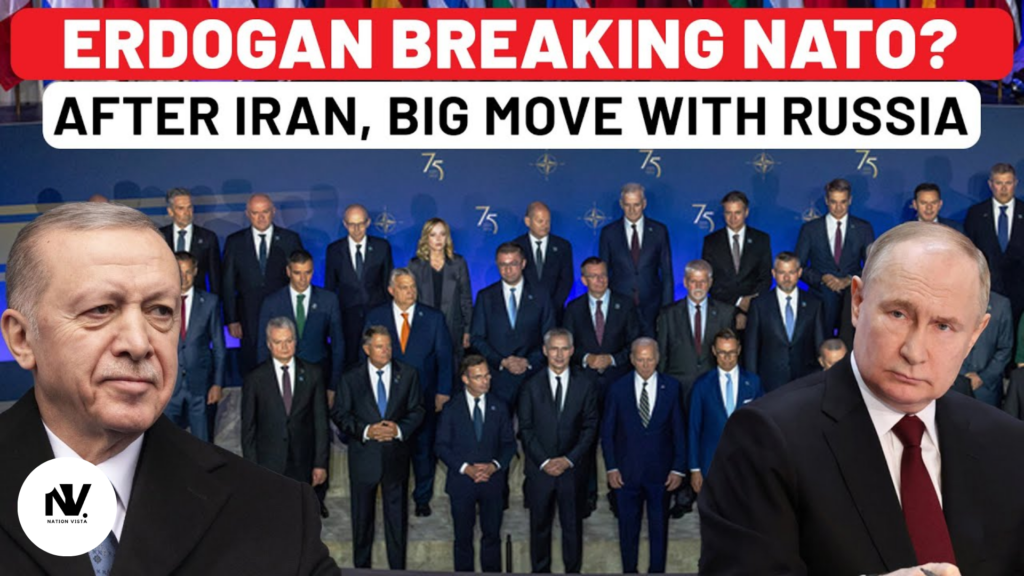After Iran, NATO Power Joins Hands With Russia For Joint Military Patrol Near Israel | Turkey | USA

INTRODUCTION In a world where alliances and rivalries drive the global landscape, the recent agreement between NATO forces and Russia to conduct combined military patrols near Israel has surprised many. This peculiar relationship occurring in one of the most uncertain regions of the world suggests a possible shift in global power dynamics. It raises eyebrows about the future of traditional coalitions. Previously, NATO and Russia have always been on different ends of the global political spectrum. Originally established as an anti-Soviet bloc, NATO has been viewing Russia as its main foe for quite a long time. The war in Ukraine and the Russian invasion of Crimea, among other conflicts in Eastern Europe, fueled mistrust, and the period after the Cold War did not bring much improvement in relations. Despite these strong animosities, NATO countries’ willingness to cooperate with Russia near Israel shows a complex and changing geopolitical reality. The answers to these concerns will be determined by how the parties involved navigate the complexities of this cooperation, balancing their political goals against the constant threat of regional instability. NATO and its existence Founded on April 4th, following World War II, it was developed to protect Western democracy from Soviet incursions into Europe and to provide collective security. NATO is an intergovernmental military alliance consisting of nations from North America and Europe that was established with the goal of defending one another from attacks. The US, Canada, and ten additional European countries (Belgium, Denmark, France, and Iceland) as initial members, Italy, Luxembourg, the Netherlands, Norway, Portugal, and the United Kingdom joined on. The alliance stressed the importance of uniting around a single command structure and engaging in joint military exercises to ensure readiness against a Soviet invasion. Throughout the Cold War, no actual confrontation between superpowers occurred because of NATO’s intimidating presence. Key Moments of Tension Between NATO and Russia The relationship between NATO and Russia has been marked by strong distrust and on-and-off rivalry. The primary goal of NATO is countering the Soviet Union’s dominance in Europe and protecting its member states from potential communist assault. The Cold War that followed this solidified NATO and the Soviet Union, and later Russia, as rivals in a worldwide ideological and military standoff. The dissolution of the Soviet Union in 1991 provided a limited window of opportunity for novel kinds of cooperation. However, NATO’s subsequent eastward expansion, which included former Soviet states and Warsaw Pact members, aroused additional challenges. Episodes that have taken place in the post-Cold War era only served to increase this difference. Some of these include Russia’s perception of 1999 NATO involvement in Kosovo as breaking international standards and 2008 Russo-Georgian War which illustrated Russian commitment to protecting its sphere of influence. The annexation of Crimea by Russia in 2014 and a continuing conflict in east Ukraine have made NATO think of Russia more as a strategic threat hence leading to an increased military presence in eastern Europe and more efforts aimed at stopping aggression from Russians. In early February 2022, relations between Moscow and Brussels reached a critical point. There were around one hundred ninety thousand troops stationed along the Ukrainian border shared by Belarus and Russia with such number giving an impression that it was ready to use force for its ends. As a response to developments on Ukraine, the US, EU, UK, and Canada imposed various sanctions mainly designed to weaken Russia’s ability to fund its territorial expansion war. Russia’s Strategy In the Syrian civil war of 2015, Russian military participation was a turning point in its strategy in the Middle East. Russia has established a military presence in the region through which it has supported Assad’s administration, thus boosting its position both at the Tartus Mediterranean naval facility and Hmeimim airbase. This move not only increased Russia’s influence over Syria but also indicated that it could use force to achieve its goals, hence weakening Western hegemony within this territory. Also, Russia’s alliances with Iran and Turkey signal its strategic positioning in the Middle East. Despite age-long animosity and divergent interests among these regional powers, Russia has always sought to maintain a balance between them, thereby serving as an arbiter in many conflicts like the one witnessed in Syria. Consequently, such actions have helped Moscow manage to become a strong nation here capable of dealing with diverse stakeholders, including Israel, as they share a complicated but functioning relationship. Turkey’s role in the region is rather specific because it is a NATO member country. Therefore, Turkey, located between the European and Asian continents, has been expected to serve as a bridge between Western and Islamic countries. Due to its geographical position, it became an important NATO member, especially in aspects of Black Sea accessibilities as well as a frontline state against potential Middle Eastern aggression. However, mainstream Turkey, which has been emerging between 2011 and 2015 and is more assertive, rather nationalist, and more inclined toward Eurasian integration than toward Europe, was criticized for its independent foreign policy in Syria and Libya, cooperation with Russia, and challenging the solidarity and coherence of NATO. The NATO forces and Russia near Israel are evident of the complex set up in the Middle East, where more often than not states align themselves to achieve geopolitical objectives. What was seen in this collaboration is that NATO and Russia, alongside all their differences, will always be able to work together where interests align, particularly in a strategic location such as the Middle East. Current Developments The decision by NATO and Russia to conduct joint military patrols near Israel is a breakthrough with significant repercussions. While the exact nature of the patrols is unknown, government claims have underlined their focus on maintaining regional stability, combating terrorism, and ensuring the security of Eastern Mediterranean marine lanes. These goals are consistent with the involved countries’ broader strategic interests, particularly in protecting energy supplies and limiting the spread of violence from Syria and neighboring hotspots. The decision to collaborate near Israeli borders implies that both sides
